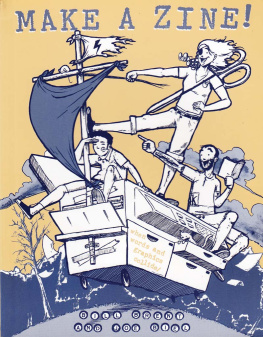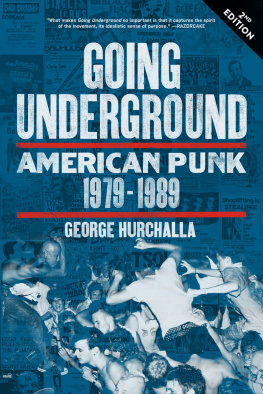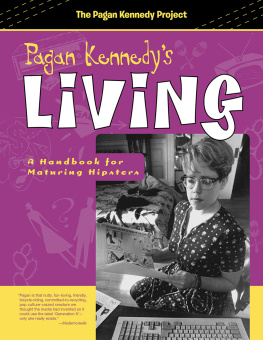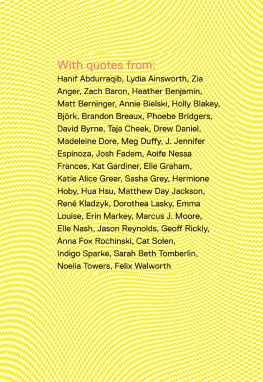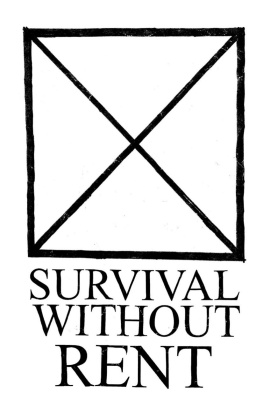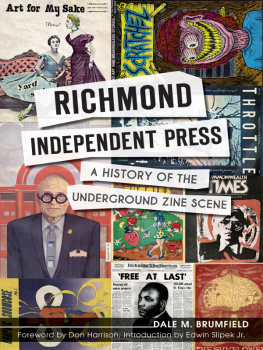Close your eyes and think for a minute. Think of something that you are passionate about and know enough to write about. Thats the single element of zine-making that really cant be learned. Passion gets you through times of no technique better than technique gets you through times of no passion. Readers also know the difference. Stick to your passions and people will notice.
Zines can contain anything: comics, fiction, poetry, crafting, sex and health, cooking and food, spirituality and religion, or personal diary rants. Anything that strikes a would-be zinester as a good topic for a zine, by definition, is. Zines have existed in virtually every imaginable format, from a letter in an envelope like Sister White to a 60-page booklet like Power of a Question, where every page has some sort of three-dimensional, interactive element, to a 256-page paperback book like We Aint Got No Car. The only limitation is your imagination.
The majority of zines are typed, handwritten, or computer-printed, then cut up and pasted, photocopied, and stapled into booklets. Some longer zines are taken to a print shop and printed on newsprint or bound like books. Most zines are written, designed, and constructed by one person, but certainly they can have multiple contributors and still be considered zines; literary zines or music zines featuring CD reviews often have more than one contributor. Some zines are more like art objects than magazines; for instance, hand-made on specialty paper or brown grocery bags, bound with twine, hand or machine sewn, fastened with metal brads, rubber bands or duct tape, and adorned with stickers, glitter, photographs, or rubber stamps. Some zines like Trouble in Mind, Ideas in Pictures, Rice Harvester, Crude Noise, and Am I Mador has the whole world gone crazy? have utilized screen-printed covers with photocopied insides.
There are zines like Ker-bloom!, typeset and printed by handentirely on a letterpress machine. Each issue is an original, limited edition piece of art. There is also The Match!an anarchist journal printed using handset type on a letterpress and published since the 1960s! These zine makers have reclaimed the means of production in every waywriting, designing, printing, distributing, and financing.

People who make and read zines dont fit easily into demographic groups. They include college students, teachers, home-schoolers, wingnuts with library cards, radical moms, women who identify, dress and pass as men, librarians, cartoonists, comedians, activists, organic farmers, childhood abuse survivors, dumpster divers and squatters, disillusioned middle-class working people, award-winning writers, bored teenagers, sex workers, and many others.
Ive found zines to be the most satisfying way to project my thoughts, experiences, or interests to a relatively wide group of people (several hundred to several thousand). One reason is that readers will write honest, heartfelt, involved responses. (People who are incarcerated are particularly invested in reading and responding to zines.)
When I created a zine about the Puerto Rican Independence Movement, I received numerous responses from former movement members and admirers alike, as well as those who were not that familiar with the topic or had no idea that the leader was recently assassinated by the FBI. The technicalities of zine-making take a backseat to what youre trying to express, whether its something that you need to purge from yourself by writing, or creating art that you dont have another outlet for, or information that you feel needs to be broadcast. When I had a vasectomy performed and created a zine about it, I was able to share the experience with plenty of individuals who were peripherally interested; many even wrote to tell me about their own vasectomy experiences.
Some zines are collected into books or developed into novels. Its important to remember that this is not necessarily the end goal. A zine is its own final product and it does not need to become a book in order to be considered valid art.
Creating zines is a way of publishing that avoids the problems of working in an increasingly stringent and impenetrable mainstream. Zines can express minority opinions, and offer space for those who arent professional writers or artists to write and produce art. Zinesters are producing work for an established and growing readership, consisting mostly of other zinesters. Instead of producing work for a mainstream or undetermined audience, zinesters produce work for their own ever-growing community.
As Vikki Law says of her zine Tenacious, in the zine community, people will read a zine about issues like the problems of women in prisons, that normally would not appear on their radar or be encountered in other media.

Because we produce our work outside of the publishing mainstream, zinesters use alternative distribution channels as well. Zines are distributed through top secret bedroom distros and sent through the mail in decorated envelopes. While personal writing abounds on blogs and websites, print zines are still thriving, and some old-school zinesters make use of new technologies to sell and promote their work. Networking sites like livejournal.com and myspace.com allow zinesters to meet lots of people doing the same thing. Fall of Autumn (www.fallofautumn.com) produces podcasts of zine writers reading their work. Theyve also created a wiki (an open-source online encyclopedia) at zinewiki.com.
Criticism and feedback are one of the strongest elements of community and growth in the zine world. Your peers are invested in such a manner that they want to create a current that raises all boats. As Gillian Beck says in the documentary film $100 and a T-shirt, Zines are one of the only mediums where people care enough to give feedback and criticize your work and its because you are all part of the same community, with similar, though unstated goals.
Enough philosophy. For the purposes of this discussion, well assume the simplest set of circumstances: Youre just starting out as a zines single author/editor, and you want to put your thoughts and ideas on paper. Lets go!

* Zine is spelled without an apostrophe because it has become its own word. The mainstream media often use an apostrophe, denoting that zine is not actually its own word in their eyes.

illustrations
Matt Gauck drew the beautiful cover as well as the illustrations on . He makes the zine Next Stop Adventure.
Sparky Taylor, in addition to endlessly proofing and editing the book, drew the octopus on . More importantly, she helped achieve my vision for this book in every way.
David Dean is a funny and swell man who draws charming bears on . He plays solo music but should also make zines. He lives in Tulsa, Oklahome.
Nate Powell has a very strict breakfast routine, and ambushing him there is the only way to contact him. He did the illustrations on . His current books include Wreckage , Sounds of Your Name, and Swallow Me Whole .
Alec Longstreth has inspired many of my friends to draw and he works like Stephen King, 9-5 daily. He did the drawering on and does a comic called Phase 7 .
Next page
